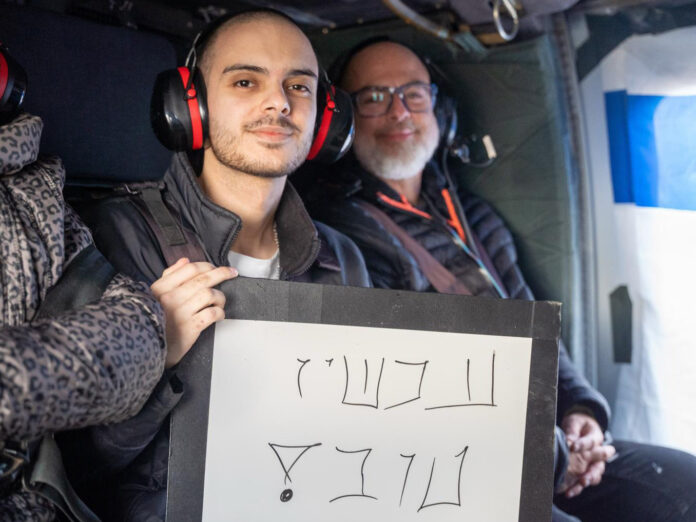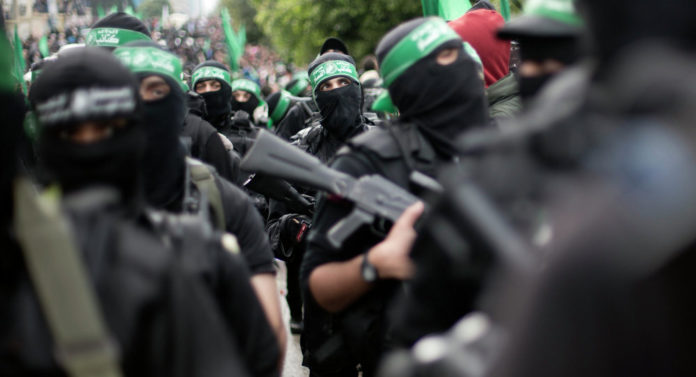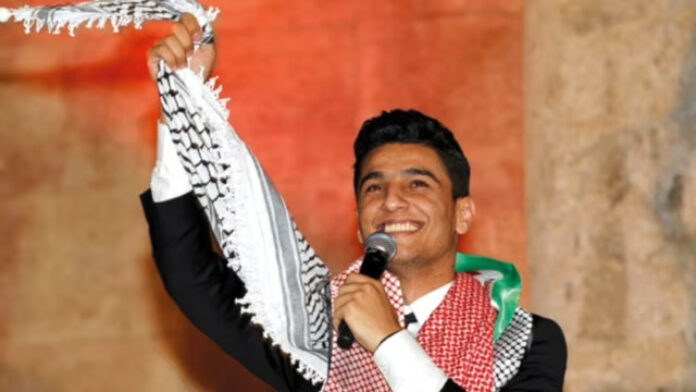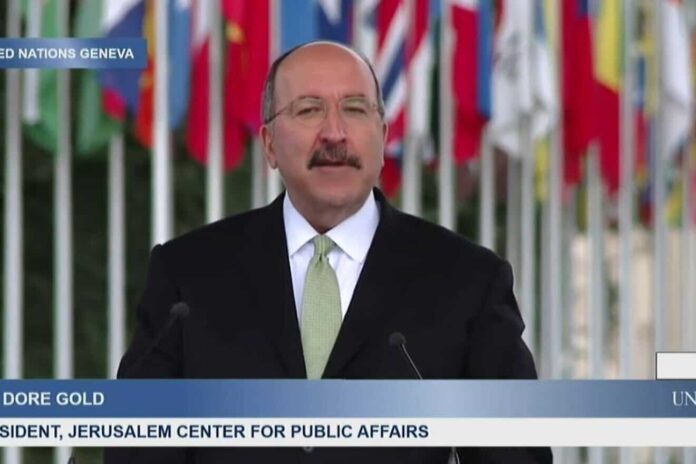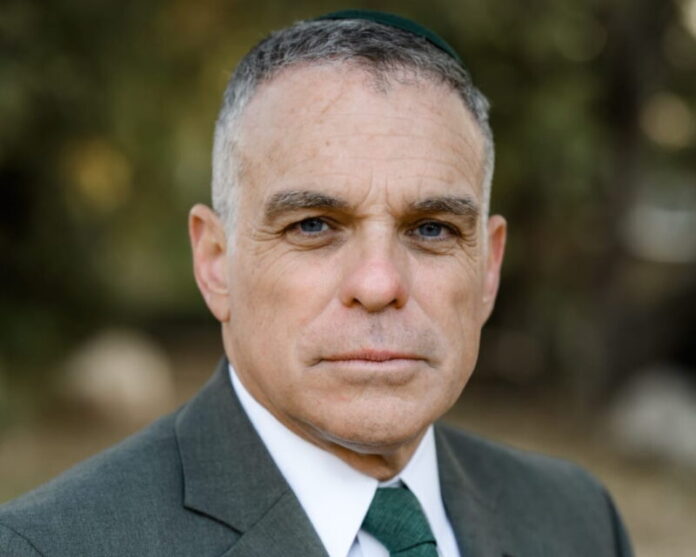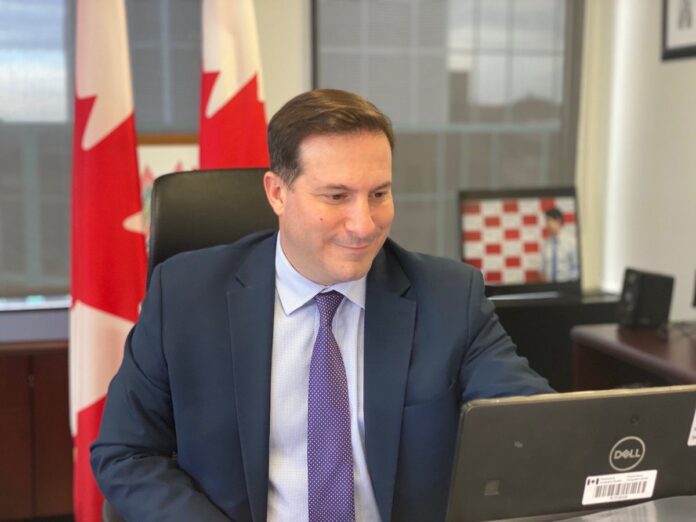The old Beit Hatfutsot, literally “the House of the Diasporas,” on Tel Aviv University’s campus was a museum focused on the past, on how and where Jews lived before the founding of the State of Israel. It was also a dark place, literally, and one that fewer and fewer people wanted to visit.
“Beit Hatfutsot was built with a specific vision, with a specific idea. Somebody even put it in a very bold manner. They said to me, ‘The idea behind Beit Hatfutsot was to build an exhibit of the different communities in the Diaspora, with the idea that all the Jews need to make aliyah, and they will have here some sort of memorial place, where they can come and see what it was like in their communities in the past,” Oded Revivi, the recently hired CEO of the Beit Hatfutsot’s successor, Anu Museum of the Jewish People, told eJewishPhilanthropy last week.
In 2005, the Knesset passed a law recognizing the museum as a national institution — similar to Yad Vashem and the National Library of Israel — and around the same time, the museum’s stakeholders decided it was time for a change.
They developed a new plan and started work to reimagine the museum. In 2012, the museum’s board hired Dan Tadmor as CEO to spearhead the total overhaul of the institution, changing its name to Anu Museum of the Jewish People, renovating the building and updating its ethos, from one primarily fixed on the past to one that highlights the present, not only how Jews once lived around the world but how they live there today.
The museum reopened its doors in 2020, and now, five years later, Revivi — who is reaching his 100th day in office — is tasked with developing a strategic vision to take the institution into the future. Revivi does not come from the museum world or even, professionally, from the Jewish peoplehood field — though he does have many personal connections to Diaspora Jewry. For more than 15 years, Revivi was mayor of the Jerusalem suburb settlement of Efrat, known for representing the more liberal and progressive face of the settler movement, championing LGBT rights and Israeli-Palestinian cooperation.
To understand his vision for the museum and how it will grapple with the immediate challenges facing the institution amid diminished Israel travel, as well as larger issues facing the Jewish people, eJewishPhilanthropy sat down with Revivi for a wide-ranging interview in his office in the basement of the museum.
The interview has been lightly edited for clarity.
Judah Ari Gross: So how’s it going so far?
Oded Revivi: That will be in Hebrew. Me’ein olam haba. [A vision of the world to come]. That’s my official online and offline answer.
When you apply for a new job — which I haven’t done very frequently so I don’t know but I can only guess — you don’t really know what holds behind the title and what it really is. And once I’ve come into this museum, I’ve discovered that it is much more than a museum. It’s a completely different topic of activity than what I am used to [doing]. At least I thought it was going to be a completely different topic. I just corrected myself in that respect because all of a sudden I find myself hosting delegations here who come because of what they’ve heard about the museum and we go into discussions about reality in Israel, challenges of the Israeli people, relationship between Israel and the Diaspora.
It is a fascinating place. I don’t know when you’re going to publish your piece but we’re coming close to my first hundred days in the office and it’s just an endless place to learn and to know about what we’re doing here and also probably what we need to do.
JAG: So what do you need to do? As you said, Anu tries to be more than just a museum that you come and walk through and look at the exhibits. What are you looking to do with the museum? What is the museum already doing that you want to help it accomplish better? What’s the goal for it moving forward?
OR: So it is no secret that Beit Hatfutsot went through a transition from Beit Hatfutsot to Anu. And for that process, the previous CEO, Dan Tadmor, did an amazing job. He took a museum that hardly anybody walked into. It was a dying dinosaur. But it had one asset, a specific legislation that only two other institutions in Israel benefit from — one is Yad Vashem and the other one is the National Library, and Beit Hatfutsot was the third one. He took Beit Hatfutsot from a place that hardly anybody walked in and created this amazing technological museum that some say is the number one in the level of technology presenting its displays. And bringing to a figure of almost half a million visitors every year, if we eliminate war and the COVID-19 pandemic.
JAG: Which is hard to do. The museum has basically only been open for COVID-19 and war.
OR: Absolutely right. We opened the day before the COVID started. We had some time without COVID, and then the war started. So that’s how we can get up to half a million visitors a year, those are the figures that we showed.
But with the challenge of COVID-19 and the war, there was definitely a request presented by the board to create a new vision for this place. Now, when you go down to write a new vision, you’re not really standing opposite the white board and writing whatever you want. You look backwards to what was written in the past and part of the vision is actually written in the legislation. Part of the vision was written by [Jewish partisan leader and writer] Abba Kovner who was one of the founders. And part of the vision was written as things developed.
For the last 10 years, the vision was to rebuild the museum. And that’s why really the board said “Now that we’ve completed the rebuilding, the rebranding of the museum, let’s see what’s the next stage.”
So for that we’re actually in a process with the team, with the chairwoman of the board, Irina Nevzlin, to try and figure out in writing what is the new vision. And when that will be completed, then it will also be able to be presented. And that’s why this is a long answer to maybe a short question. I can tell you that the guidelines that I received from the board is to write a new vision. I can say to you that the guidelines that I received were that they would like to see Anu becoming an even more dominant place.
When I came here and I said that in the interview [for the position], I said I would like to see every dignitary who comes to Israel, like they go to Yad Vashem, like they go to the Kotel, that they come and visit the Anu Museum. Why? Because the Anu Museum displays a completely different chapter or a different approach of [Jewish] history that needs to be presented. And if it is so important to take every head of state, every dignitary to see Yad Vashem, it is just as important to bring them here. I wasn’t aware, as somebody who grew up in Jerusalem, who lives in Efrat, that hardly anybody comes to Tel Aviv. Apparently all the important people, they just come to Jerusalem. So you have a challenge, how do you put in their itinerary an activity taking place in Tel Aviv.
If we’re talking about making Anu in a more dominant place, I can give you ideas where we are at the moment. We are in some sort of discussion with at least two Jewish museums around the world. One of them is closed, one of them hasn’t closed yet. And both of them are saying we would like to be a branch of the Anu Museum. So if I become a chain of museums, that’s really putting me in a more dominant place.
There is a beginning of a process of turning this museum into completely digital. What does that mean? It means that if you live in the furthest place from Israel and you haven’t had a chance yet to visit the museum, we’ll be able to provide you a digital tour in the museum that you’ll have the experience of almost being here. And we are exploring maybe even having with one of the universities a master’s degree in Jewish peoplehood. So those are the types of things that we are exploring.
JAG: Are there other areas that you’re looking to, that you’re sort of exploring? Producing content, producing movies or documentaries.
OR: There are definitely different ideas. At the end of the day, it’s also a matter of raising funds for it. We’ve got a range of different backgrounds of donors, and they come from different fields of professionalism. We had a talk with somebody three weeks ago about creating games for the Anu Museum. Why? Because he sees his grandchildren with all the games and he says, “I want them to engage through gaming.” So will that develop into something physical or not? Time will tell. We’re open for suggestions and exploring in every direction, bearing in mind that the charter of the museum is to strengthen the connection of the Jewish people, wherever they are in the world, to their Judaism. And that’s what we’re trying to do.
JAG: There are constantly discussions about what is Jewish peoplehood, what is Jewish peoplehood versus Zionism, versus other ideologies that are out there. What do you believe is the role of Jewish people who today don’t live in the State of Israel? What’s their connection to the story of the Jewish people and to the museum?
OR: So here I will specify that what I’m answering here is my personal opinion. I’m not a spokesperson of the museum.
When we have a terror attack in one of the Jewish communities around the world, you hear Israeli government ministers coming out with a statement, “This is a lesson. All the Jews in that specific city need to come on a plane yesterday and make aliyah.” That comes from a place of not understanding what it means to be a Jew in the Diaspora, not understanding that the people who live there actually have a life, not understanding that they have families, they have workplaces, and not everybody can make aliyah.
As a kid, I was twice on shlichut with my parents. It gave me quite a good sense of what it means to be a Jew in the Diaspora. My father worked all his life for Jewish organizations. I don’t remember one Friday night that we didn’t have guests from abroad, from different types of communities, different backgrounds, and Judaism was always discussed on the Shabbat meal table.
JAG: Where did you do shlichut?
OR: Once in Englewood, N.J., and once in London. And then I did my law degree in England, where I met my wife, who is from Manchester, and we’re still connected to the community that she grew up in, and we just visited two weeks ago. My mother-in-law lives there. She’s almost 92. And when we discuss with her making aliyah because life is becoming difficult, her answer is, “I’m not making aliyah because I have a life here.” And that’s with all the hardship that she’s going through, just because of her age and her health. So, there is a place in this world for the Diaspora. And people who don’t realize it and don’t see it, they don’t understand the whole picture of the Jewish people.
I think Oct. 7 has been a turning point for both Israelis and Jews in the Diaspora in understanding two things: One is the importance of the existence of one another. All of a sudden, we in Israel understood how important it is to have a strong American Jewry who can put pressure on a president, whether he wants to support us or doesn’t want to support us, wants to send ammunition, doesn’t want to send ammunition. If you didn’t have a strong American Jewish community, there wouldn’t be an AIPAC.
And on the other hand, I think that the Diaspora, after a long period of frustration with decisions made by the State of Israel, all of a sudden, because of the the rise in antisemitism, understood how important it is that there will be a strong Israel, that Israel will be able to look after the interests of these communities and try to see how we can benefit one another.
JAG: Speaking of those differences, the plurality of American Jews support the two-state solution. You come to this position as a former mayor of Efrat, which is a settlement. Do you see that as an issue? Has that been an area that you have to navigate? Or is that not something that’s come up? Even in Israel, there’s certainly people who may have an issue with that. Was that something that was brought up when you were applying for the position?
OR: It wasn’t brought up when I was applying for the position. It’s definitely being raised, I would say, at least once a day. OK. [He chuckled.] I can’t erase my background. Nobody can change the fact that I was the mayor of Efrat for 15.5 years. I’m proud to say that being the mayor of Efrat for 15.5 years, I’ve built myself a reputation of somebody who is keen on building bridges and not building fences.
I can mention as a fact that on Oct. 5, two days before the Oct. 7 [attacks], in my house, there was the annual gathering of Palestinian neighbors with a general from the IDF, an equivalent officer from the police and residents of Ephrat.
During my last election, the person who was running against me definitely used that against me. And I said, “Look, Oded is one who can have a dialogue with Arabs and look what happened on Oct. 7. Do you want somebody like that as a mayor?”
So I don’t really think that I have something to be embarrassed about. I think I can take it as a tool to show how I deal with different opinions and different views, apply the same method in my position here when we need to be the center of all the Jewish communities in Israel and in the Diaspora, and to try and engage with every single community.
JAG: There are also significant portions of the population in Israel and abroad that think it’s a good thing that you come from that background as well, obviously.
OR: Right. So my background, in a way, is not relevant. On the other hand, my background might be very relevant to try and attract new audiences that weren’t here before.
JAG: In terms of audiences, Israel right now is seeing very low tourism. In terms of individuals, in terms of groups, and all of the large gap year programs, which I imagine were the bread and butter of your visitors. That’s something that’s seen a significant decrease. As you are developing a new vision for the museum, are you factoring in those kinds of dips in tourism to build resilience for the museum? Through the digital version of the tour that you mentioned, for instance?
OR: Resilience is a nice word. After Oct. 7, we actually developed a special tour with a focus on resilience. And I’m just picking on a word that you’ve included in your question and I’ll address your question in a minute, but I’ll just give you an example. We have in the exhibition of the middle of the 19th century, when people were in a dilemma: Where to go? To immigrate to the United States, to stay in Europe, to leave Judaism, to go to Israel. And one of the exhibits which is actually very loaded is a wooden suitcase that we used to convey a message for kids. What were the dilemmas of a wandering Jew? What do you actually put in the suitcase? You can’t fit everything in. And it’s a small game that you try and fit things in. Those who designed the exhibit couldn’t anticipate Oct. 7 and couldn’t anticipate the dilemma that kids and families in the north and in the south having to be evacuated from their homes had about what to put in their suitcase.
So it is an excellent example of where we take history, we bring it into current events and relevance, but also now to show the perspective of what happened 100 years ago. Maybe the same dilemmas, but since then we’ve got an independent state, we’ve got an army, we’re bigger, we’re stronger.
There is no replacement for the actual experience of coming and going through the museum. Something different. And even when you come here, if you start at the third floor and go down to the first floor or start at the 1st floor and go all the way up to the third floor, you feel a completely different experience. So we’re hoping that the lack of tourists, the lack of donors, the lack of visitors from abroad is something temporary and will end very quickly.
JAG: And how do you teach Israelis about the importance of Jewish peoplehood?
OR: There is a challenge. When you see on an average day, the amount of students that go through the museum, you see the amount of soldiers who go through the museum, you understand that we are trying to do the best to touch as many people as possible, not to convince them, but to try to teach them the language, to try and teach them the diversity of the Jewish people. And in order to achieve that, we need funds, which is definitely a challenge when you don’t have tourists and when the donors don’t come as frequently as they used to come.
For example, in Israel it’s become popular to send kids to mechinot [pre-army preparatory programs]. I would love to get these youngsters to come and explore the museum, but these programs are very low funded. They don’t have the funds to provide for the buses to bring the youngsters here to the museum. If I could find a donor who would fund their journey to the museum, that would be amazing. So the attempt to reach more audiences and more Israelis is definitely out there.
JAG: In terms of fundraising, on the one hand there has been an increase in funding for Israel-related issues and Jewish education-related issues post-Oct. 7, and on the other, there has reportedly been a drop in funding in some other areas, such as in culture. Where does Anu fall in that?
OR: I would say that museums, art, culture are not always at the top priority of the philanthropic world, because there are always way more burning issues and more urgent issues.
JAG: But education is.
OR: Right, so we try to find the areas where we can create attractive motives for people to donate. So as you said, education is one. Tolerance is another one. Israeli soldiers are a third one. There were quite a lot of people who were evacuated from the north and the south, and some of them lived in proximity of Tel Aviv. So we had special tools, special programs for those who were evacuated from their homes, not because we wanted to raise donations, but because we wanted to provide them with culture, and then we understood that that might be a tool to actually raise funds.
So raising donations is always challenging. In these times it’s especially challenging. But I have full trust in our team that will create programs and relevance and attraction that will also be able to raise the donations.
JAG: I wanted to ask as well, in terms of the vision for the institution, one thing that I saw recently, there was a plan that was announced recently about Anu taking part in lawsuits against Hamas. That raised an eyebrow for me. Not that it’s a bad thing, of course, but how does that fit into the museum, into its mission, its work?
OR: So in the past, the museum really tried not to touch anything that has to do with antisemitism. Why? Because the museum wanted to focus on positive, on a good story, and to differentiate with places who only tell the story of the victim. After Oct. 7, there was a question raised, can we really not deal also with current events? Especially if we want to be the place that every Jew sees his connection to. Maybe this is also a tool that we can combine efforts of all the Jewish people together.
So it’s definitely not a project that Anu is going to file lawsuits, but it was in the vision of creating a coalition that Jews can be a part of. And that definitely stands on the agenda of the Anu Museum, How do we make sure that every Jew feels part of what’s happening here?
So at the moment it’s still in some sort of planning, thinking process, and when things will get moving, then I guess you will hear about it.
JAG: More generally, is the museum looking to take part in activism, to not just educate or reflect reality but to play a more active role?
OR: I think the interest is [in] being relevant. Understanding that if you’re not relevant, and this building has experienced it already once, you move backwards, you get closed. We don’t want to go through the same experience again. Beit Hatfutsot was built with a specific vision, with a specific idea. Somebody even put it in a very bold manner, they said to me, “The idea behind Beit Hatfutsot was to build an exhibit of the different communities in the Diaspora, with the idea that all the Jews need to make Aliyah, and they will have here some sort of memorial place, and they can come and see what it was like in their communities in the past.”
The museum here was reopened about four years ago with the understanding that this is the most new and the most revolutionary museum in Israel. I can’t stay in the same place even for four years. I need to move forward, and I need to be relevant. How do you make yourself relevant in a reality that building new exhibitions is very expensive? You don’t have that much space to put new exhibitions because the old ones are extremely important, and you don’t want to take them down. You try to think of other ideas, so education is one thing, activism is another thing, journalism is another thing, digital is another thing. And we’re exploring all aspects to carry on being relevant.





